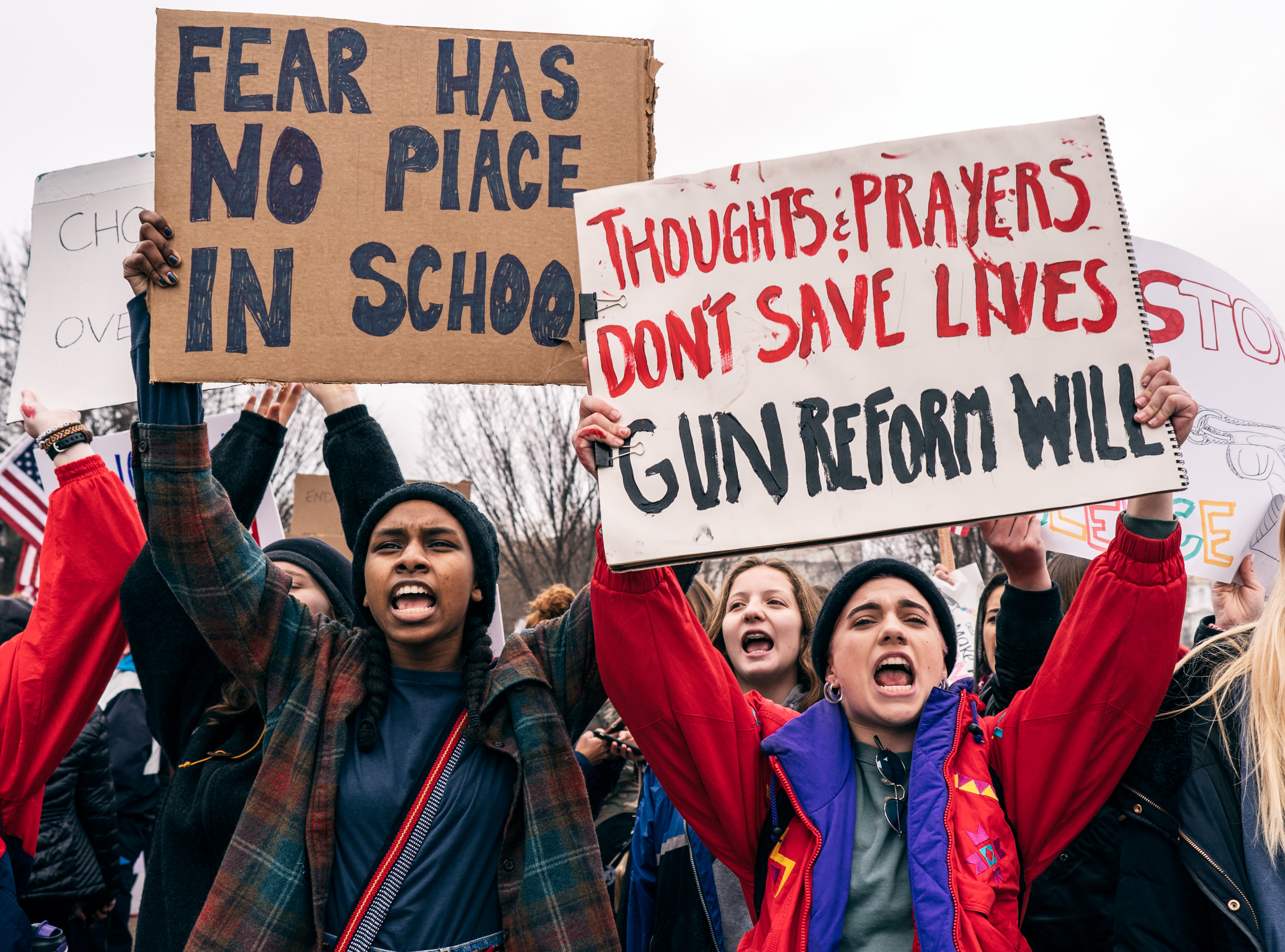
Lorie Shaull/CC BY-SA 2.0
Student protestors on gun reform in the wake of the February 14, 2018 shooting at Marjory Stoneman Douglas High School in Parkland, Florida. The protest was organized by Teens For Gun Reform, an organization created by students in the Washington DC area.









